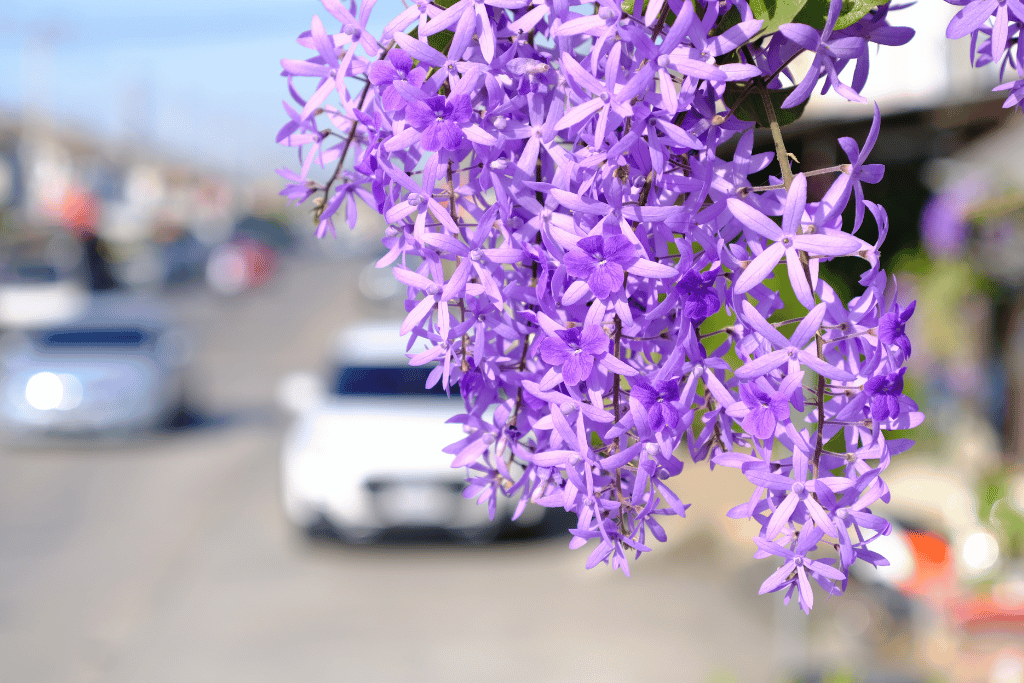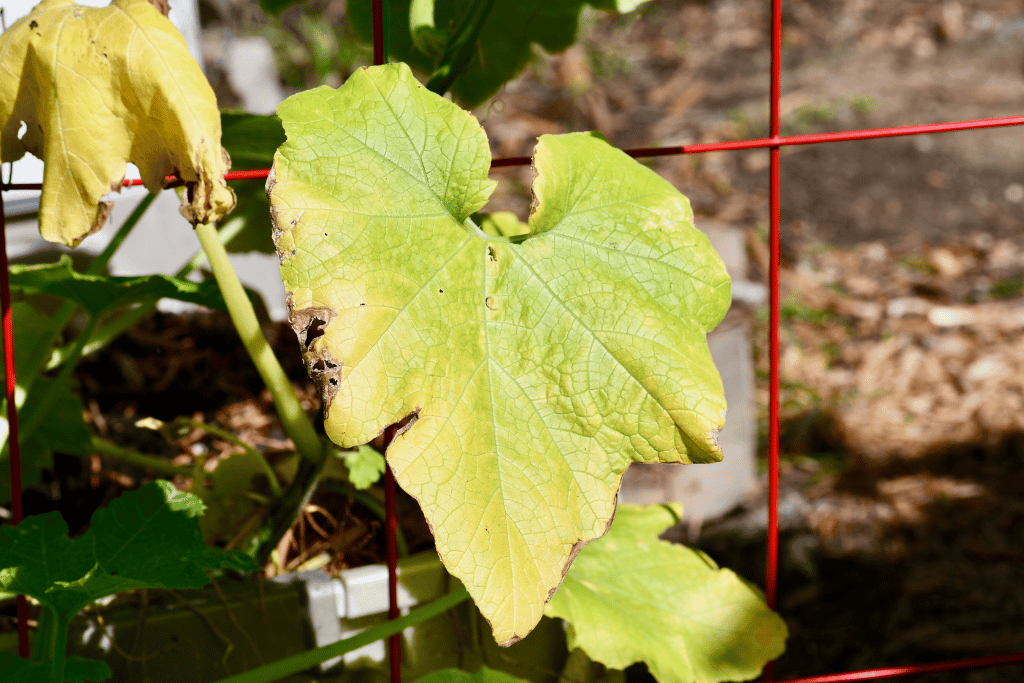

Welcome to the ultimate showdown of the plant world: Monstera albo vs Thai constellation! This battle between two beautiful plants promises to be a scintillating affair, with both sides having their own advantages and disadvantages. But who will emerge victorious? Read on to find out!
The Monstera Albo – An Overview

The Thai constellation is another beautiful, variegated plant with creamy white leaves featuring pink or purple speckles. This plant is native to Panama and Southern Mexico and grows best in warm, humid climates. It can reach heights of up to 20 feet (1-2 feet each year), but typically stays shorter indoors. This plant is a slow grower, so be patient! When it does reach its peak, the leaves can reach up to 12 inches wide.
This plant is a semi-epiphyte and will do best when planted in high-quality soil with plenty of drainage. This plant likes indirect light but should not be placed in direct sunlight, as this could cause scorching of the leaves.
Comparing Monstera Albo Vs Thai Constellation
Let’s compare the two monstera varieties and see how they differ:
1. Appearance
Monstera albo is a naturally occurring mutation that presents itself as a mix of green and white leaves. It is characterized by its marbled or sectoral pattern, sometimes with half-moons. The white portions of the albo’s leaves lack chlorophyll which can be damaging to its health if there is too much white.
Furthermore, too much sun exposure can cause it to brown or burn. This mutation is propagated from a mother plant with the specific genetic mutation, similar to albinism in mammals.
Monstera thai constellation, on the other hand, was produced in a laboratory located in Thailand. It has a more consistent and speckled variegation pattern, with occasional streaks of creamy color. The white portions of these leaves are more cream-colored than the stark white of the Monstera albo. This variety can be reproduced through tissue culture in a lab setting.
When comparing the two monstera varieties, it is easy to see how they differ in appearance. Ultimately, it is up to you – the grower, to decide which monstera variety you prefer. Each has its own unique beauty and practicality.
2. Size and shape
When it comes to size, both varieties are somewhat similar. The Thai constellation has shorter internodes with a bushier appearance that spread out because of its large leaves. In contrast, Monstera albo borsigiana’s nodes are 6 inches apart, leading to a more elongated form that looks like a climber.
If you’re looking for something more profuse, the Thai constellation is ideal as it grows faster. But, if vining plants is your jam, then Monstera albo borsigiana is a better choice.
To maintain the size and shape, both Monstera varieties must be regularly pruned with clean and sharp instruments.
For Monstera albo, you’ll need a moss pole or some other support to regulate its growth.
3. Growth rate
The next factor between monstera albo vs thai constellation is the growth rate. The Thai constellation is known to grow a little faster than the Monstera albo due to its shorter internodes and bushier form.
Expect the Thai constellation to fully grow out in a pot within a year, whereas the monstera albo could take up more time, depending on the size and type of container used.
Monstera albo is also known for its slower growth rate, making it ideal for smaller spaces or areas with limited room where fast-growing plants may be too overwhelming. On the other hand, the Thai constellation is perfect for large, open spaces or if you’re looking to watch your plant grow quickly.
4. Care and maintenance
When it comes to care and maintenance, both Monstera albo and Thai constellation require similar conditions. Both like bright indirect light and thrive in humid environments. They should be watered when the soil feels half dry because regular watering can cause root rot and fungal diseases.
5. Propagation
Both Monstera albo and Thai constellations are commonly propagated from cuttings or through air layering. Monstera albo is the easier of the two to propagate, as it produces more adventitious roots than Thai constellation.
Propagating Monstera albo will also require fewer resources, such as a smaller potting mixture or fewer snail guards and misting devices.
A Deeper Look at the Variations of Monstera Albo vs Thai Constellation
1. Monstera deliciosa albo variegata vs thai constellation
Monstera deliciosa albo variegata and Thai constellation are two unique and beautiful variations of Monstera deliciosa. While they may look similar, the slight differences in the patterning and growth rate set them apart from each other. If you’re looking for a stunning houseplant that will bring a touch of beauty to any room, either Monstera albo variegata or Thai constellation is sure to do the trick!
If you’re more inclined towards the Monstera albo, you’ll be pleased to know that it has more varieties. Monstera deliciosa albo variegata is a beautiful mutation of the classic Monstera and is known for its white-splashed leaves.
On the other hand, Thai constellation (aka variegate) is a natural variation of M. Deliciosa, featuring spectacular yellow-green leaves with splashes of white. Although it isn’t as rare as M. Albovariegata, it still stands out from other varieties due to its unique color and patterning.
Looks
When it comes to looks between monstera deliciosa albo vs thai constellation, albo variegata definitely takes the cake. Its leaves are filled with cream-colored splashes, making them look like a work of art. The Thai constellation doesn’t feature any white splashing but instead has yellowish-green foliage with pale creamy spots, which are unique but still doesn;t look as appealing as the albo.
Leaf shape
The leaf shape of Monstera albo variegata is oval-shaped with a pointed tip, and its leaves can reach up to 35 inches in length. On the other hand, Thai constellation has elliptical-shaped leaves that typically measure around 12 inches in length.
Growth
Monstera albo variegata has a slower growth rate compared to other monstera varieties and can take up to two years before it reaches its full size. Thai constellation grows much faster, with some plants reaching their mature size in just one year.
Care
When it comes to caring, both Monstera albo variegata and Thai constellation need a lot of attention. They both thrive in indirect sunlight, humidity, and high temperatures. Both varieties should be watered regularly, with the soil needing to dry out completely between waterings.
Discover Monstera Thai Constellation care tips and information by reading here!
Propagation
In terms of ease of propagation, Thai constellation is much easier to propagate than Monstera albo variegata. The Thai constellation can be propagated by leaf-cutting, whereas for Monstera albo variegata, you have to wait for it to produce offsets or aerial roots.
Overall, both Monstera albo variegata and Thai constellation are equally impressive, with each one having its own unique characteristics. It’s up to you to decide which one you prefer!
2. Monstera borsigiana albo variegata vs thai constellation
The second variety of monstera that is often compared is monstera borsigiana albo variegata and thai constellation. Monstera borsigiana albo variegata is a hybrid monstera cultivar, and thai constellation is a monstera deliciosa variety.
Appearance
Monstera borsigiana albo variegata features white markings on its green leaves. These may be splashes, spots, or streaks of white, which can vary in intensity from plant to plant and may slowly turn yellow as it matures. People often think that a borsigiana and an albo variegata are the same, but that’s not true. Borsigiana is a vining plant, while the other is a variegated version.
The thai constellation, on the other hand, has yellow markings instead, which tend to appear more uniformly with a unique constellation-like pattern.
Leaves
The leaves of monstera borsigiana albo variegata are known for their glossy appearance and distinct white variegation on the edges, while thai constellation typically has less variegation, but the leaves are more intricate.
Requirements
Both monstera borsigiana albo variegata and monstera deliciosa thai constellation prefer bright indirect light and high humidity. However, thai constellation can be more sensitive to colder temperatures than the monstera borsigiana albo variegata.
Conclusion
In conclusion, both Monstera albo and Thai constellation are unique and special varieties of the Monstera species. While they may have some similarities in terms of their appearance and care requirements, it’s clear that there are differences between them as well.
The Monstera albo is known for its white-splashed leaves, while the Thai constellation is characterized by its variegated leaves.
The Thai constellation tends to be a bit harder than the Monstera albo, but both varieties need plenty of bright, indirect light and watering in order to thrive.
Frequently Asked Questions (FAQ)
How do I care for either of these plants?
Both Monstera albo and Thai constellation need bright indirect light and moist soil in order to thrive. Water them when the top inch of soil is dry, and make sure you don’t over-water them, as this can cause root rot. They will also appreciate a humid environment, so using a mister or pebble tray with water to increase humidity may be beneficial. Fertilize every two weeks during the growing season with a balanced fertilizer to ensure healthy growth.
How can I tell if my monstera albo or thai constellation is healthy?
A healthy Monstera albo or Thai constellation should have bright green leaves and grow relatively quickly. The plant should not have any yellowing or browning of the leaves, as this could indicate an issue with the soil, light, or water.
The plant should also have healthy roots, and the soil should be moist but not soggy. If you notice any of these issues, it may be beneficial to re-pot your plant and inspect the roots for damage. Moreover, ensure you provide adequate light and water for your plant.
How to prune them?
Pruning your Monstera albo or Thai constellation is a great way to maintain their size and encourage new growth. To prune, use sharp shears to snip off dead leaves or stems. Make sure you don’t cut away more than about 25% of the plant at once, as this can shock it.
If you would like to shape your plant, prune it by cutting off the stems just above a node. This is a point where a leaf or stem was previously located, and new growth will emerge from this point. You can also trim away any aerial roots that are growing out of the pot if desired.
How do I propagate either of these plants
When it comes to propagating a Monstera Albo or Thai Constellation, start by cutting off a stem just below a node. Make sure that the stem has at least two nodes and is healthy. Then, place the cutting in water or moist soil and wait for it to root.
Once rooted, you can then move it into a pot with moist soil. Place it in an area with bright indirect light and keep the soil wet but not soggy. Congratulations, you have successfully propagated your Monstera albo or Thai constellation!



